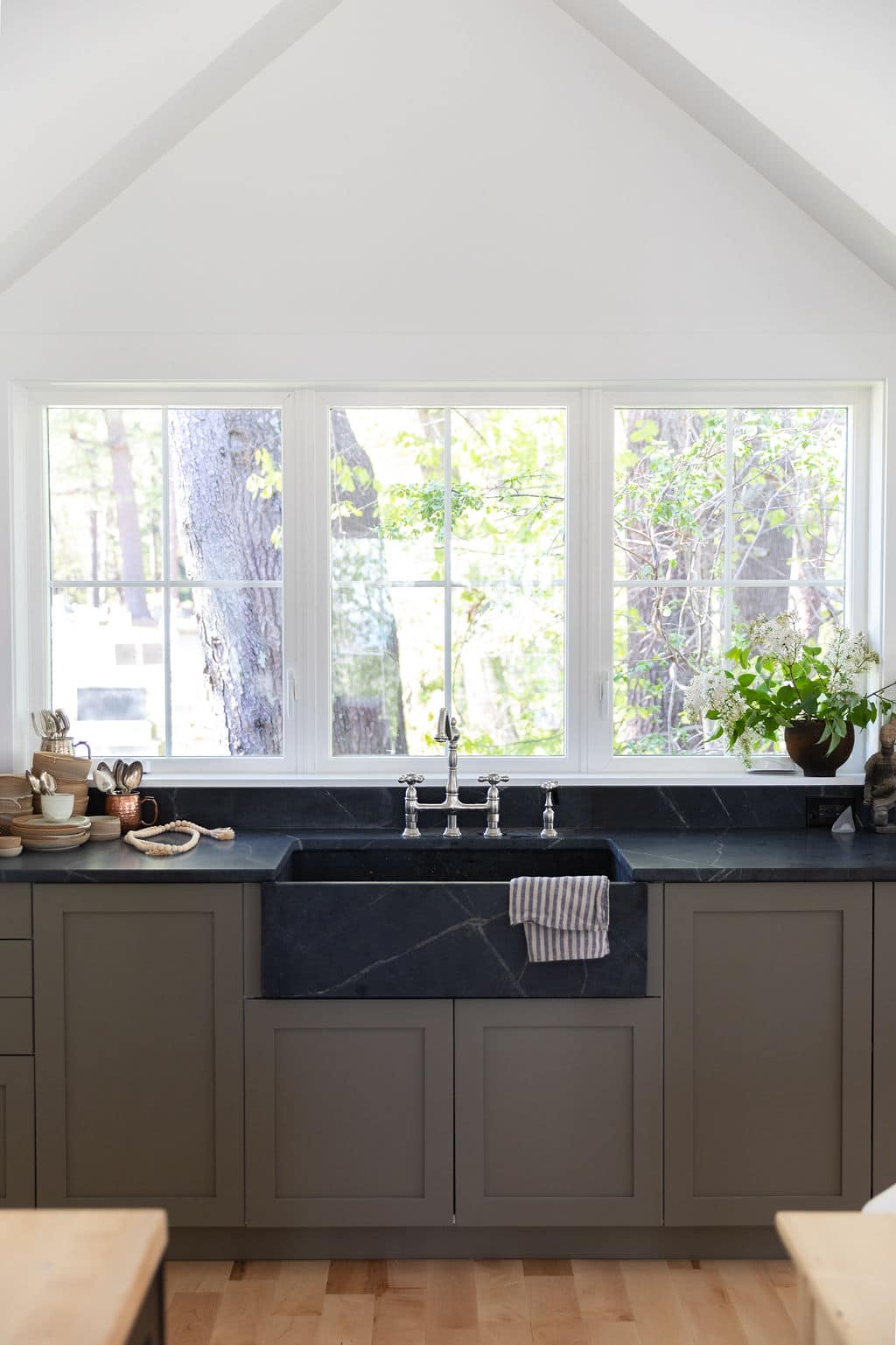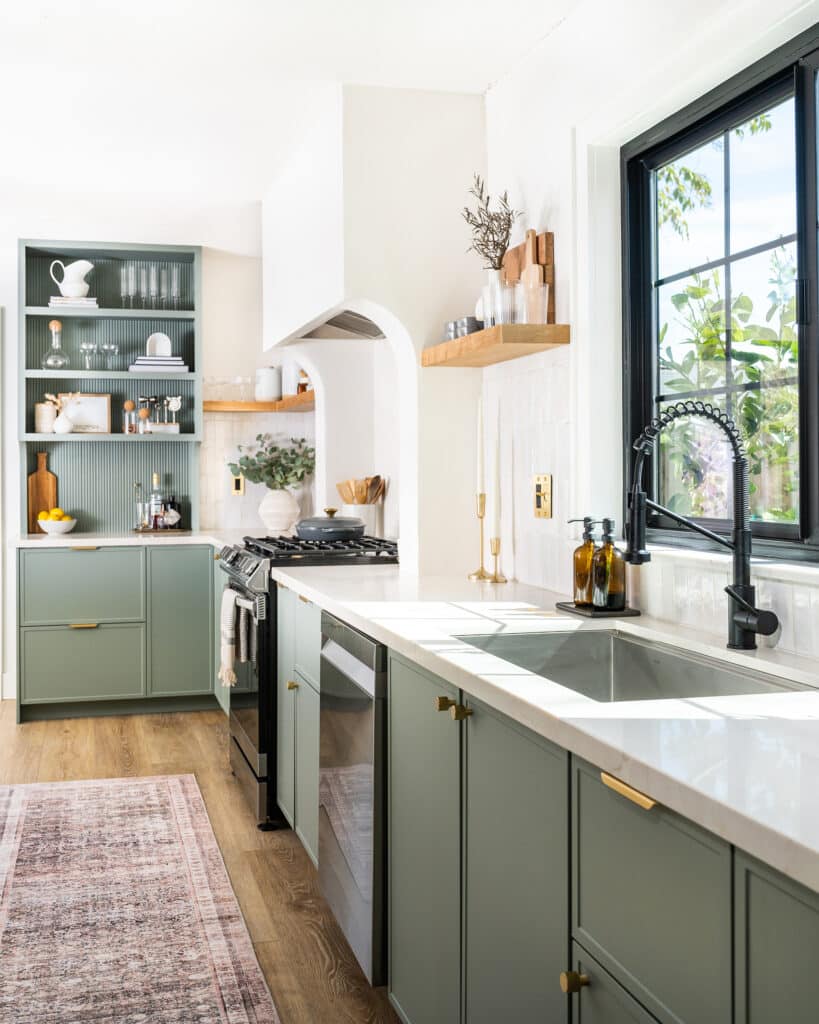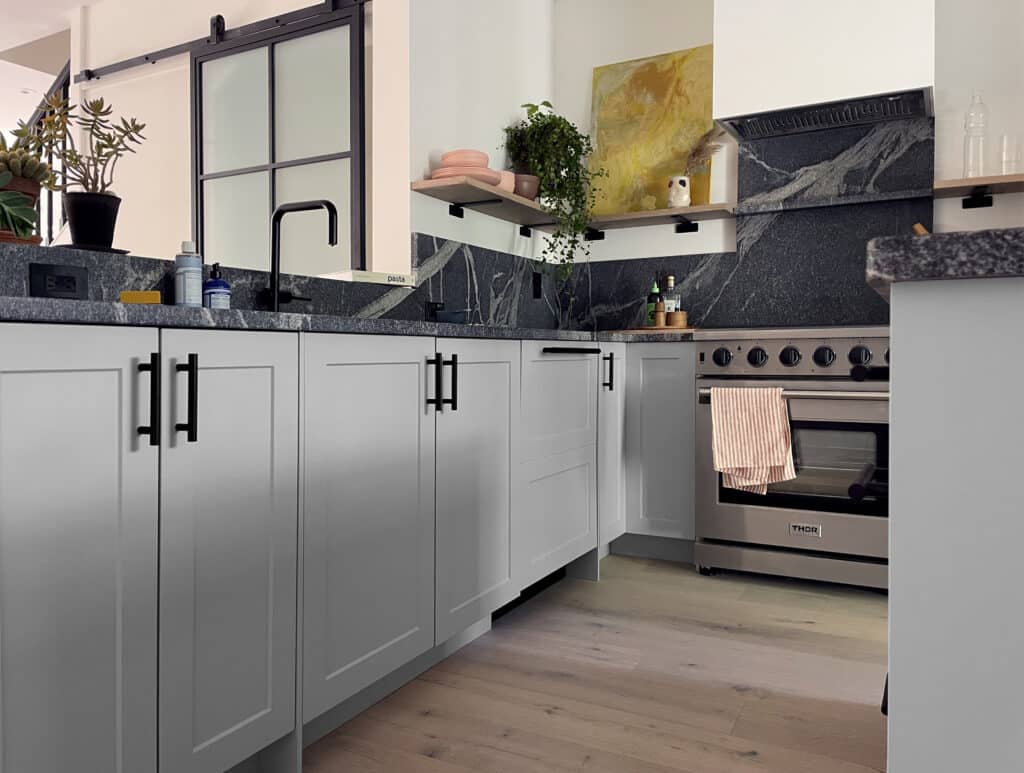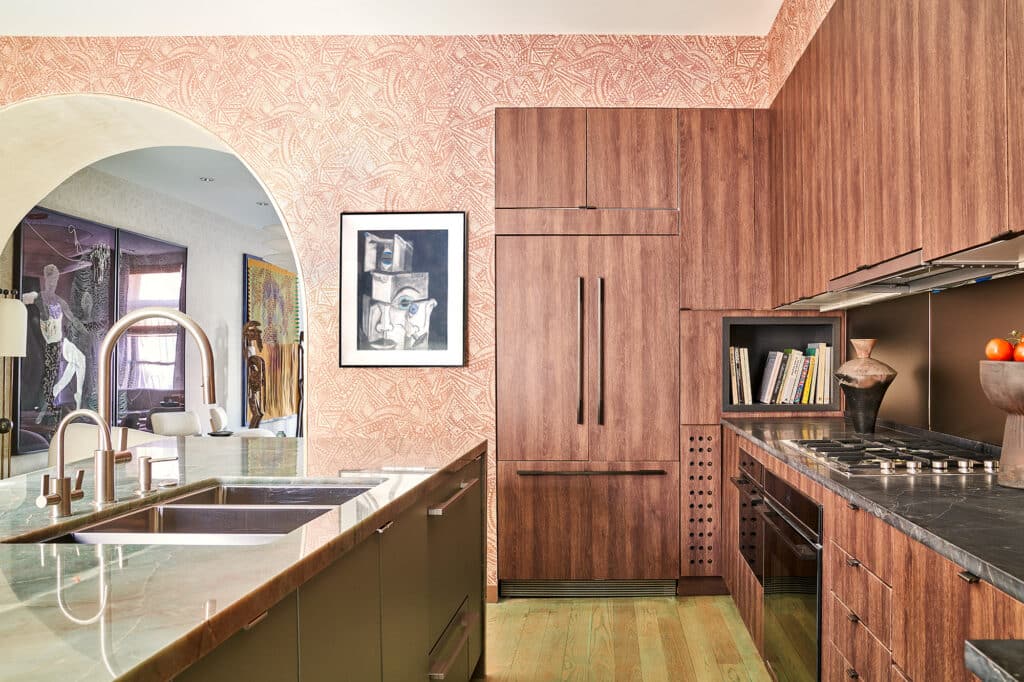After flipping a cottage, updating a starter home, and renovating their current Maine abode, artist Sarah Madeira Day and her pharmacist-framer husband Wes took on their late 1800s garage for their next overhaul project.
For years, Day had been painting and operating her print business out of their house. When it eventually became too cramped for her two employees and young family to coexist, the couple evaluated their options. They determined that the century-old garage, which had beautiful original wainscotting yet needed a refresh, could be transformed into an art studio.
In order to add a level, the Days had to rip off the roof and reinforce all the existing lumber for structural support. They then installed insulation, built a stairwell, crafted stable-style doors, and painted the entire exterior a monochromatic navy-tinged black that contrasts the white main residence.
The second floor interior was designed to include a creation area, shipping center, bathroom, and kitchenette. The latter two elements, while convenient to have now, were strategic additions for the future. “For resale purposes, it could easily be converted into an in-law apartment,” Day explains. At the moment, though, she’s thrilled with her new painter’s oasis.


Honoring History
To remain consistent with the original era of construction, Day opted for traditional finishes like Colonial gridded windows, an ornate bridge faucet, and Semihandmade DIY Shaker doors on the extensive cabinetry system. “I wanted it to look like a cohesive part of the property,” she says. “I wanted it to seem like it’s part of the house although it is new.”
Day employed a classic color palette, as well, with simple eggshell on the walls, gray green on the cupboards in the kitchenette, and a light mushroom tone on the floor-to-ceiling storage in the shipping center. All the fronts are knob-less, which Day is considering as a permanent choice. “We have a lot of doors in a small space, so when you start adding hardware it takes away from the clean look,” she reasons.
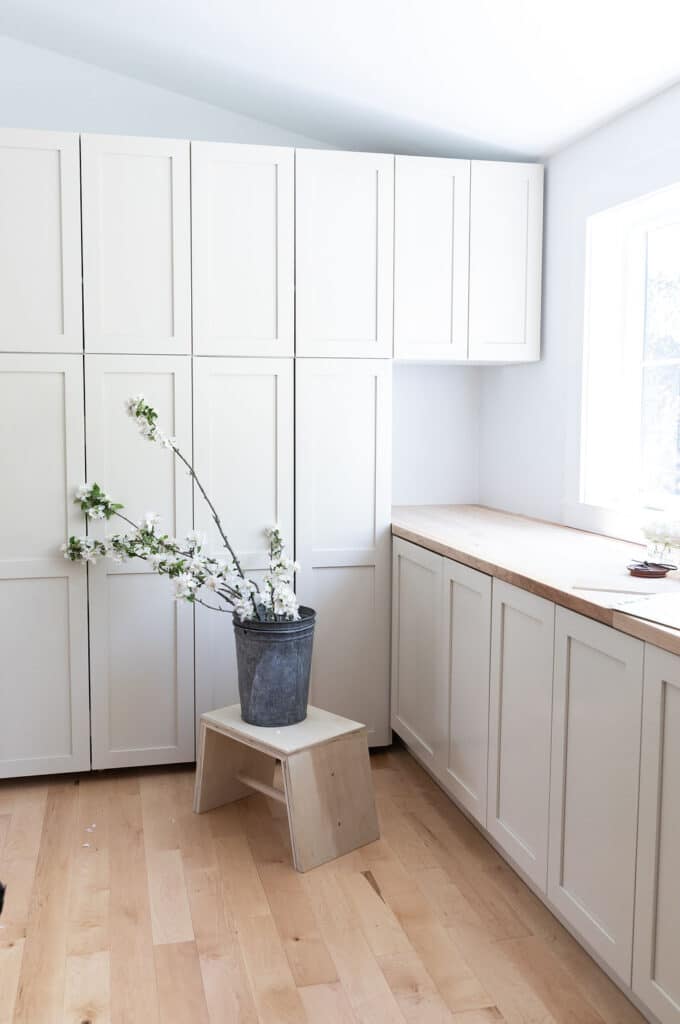
Optimizing for Art
Certain decisions, like the soapstone counter and deep custom sink fashioned by Wes’s father, help optimize the place for creativity. While Day loves white quartz aesthetically, she knew the charcoal-hued material would be a smarter move. “Because of the dark color, it hides paint stains better,” she shares. “I ended up not getting it sealed so it’s matte and rough scratches aren’t as visible. It’s a little more toned down.”
For the floors, Day went with prefinished hardwood maple. “I needed something hard and finished because I spill all the time,” she describes. “I needed something that’s easy to clean up. This was durable enough to stand up to the wear and tear of being a messy artist.”
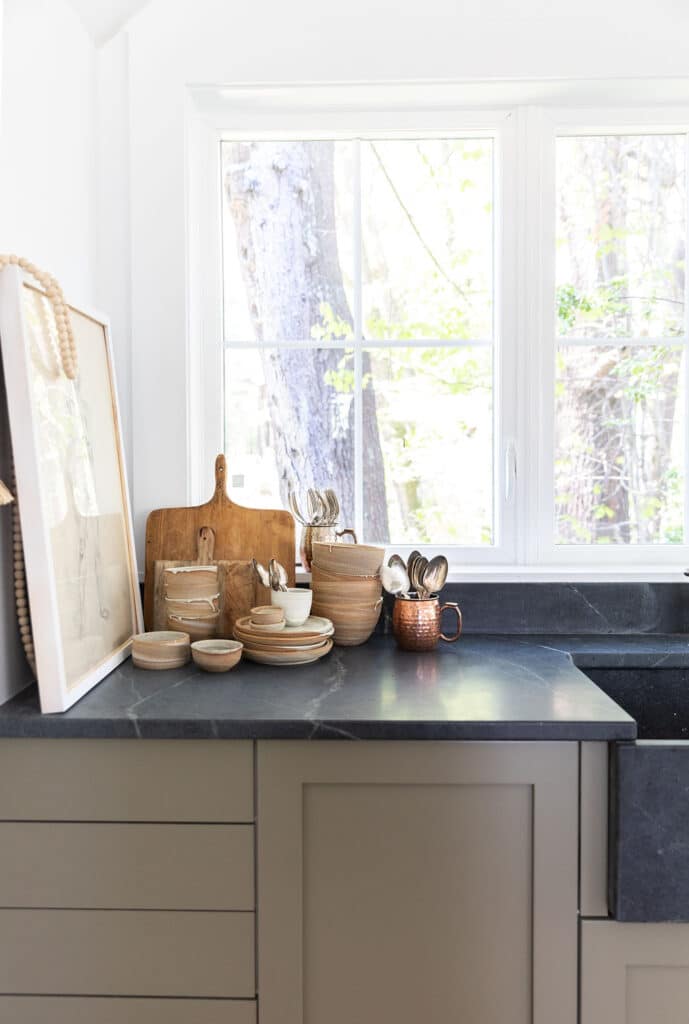
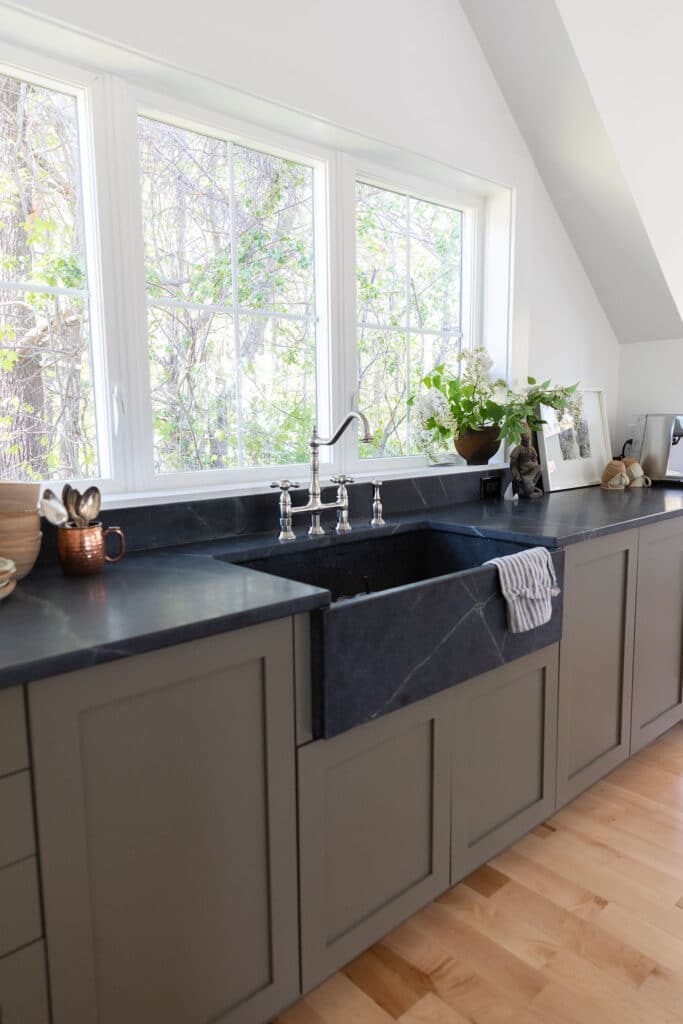
Reusing and Recycling
Salvaged wood furniture abounds, too. Wes’s father used reclaimed spruce and pine from the torn-down rafters to build extra long work tables; Day and Wes combined scrap butcher block from a family hotel with legs from Etsy to make a coffee table; and Wes sanded down the antique door from the main house for the bathroom entry. Much like the entire remodel, everything old is new again.





